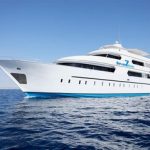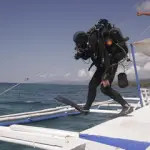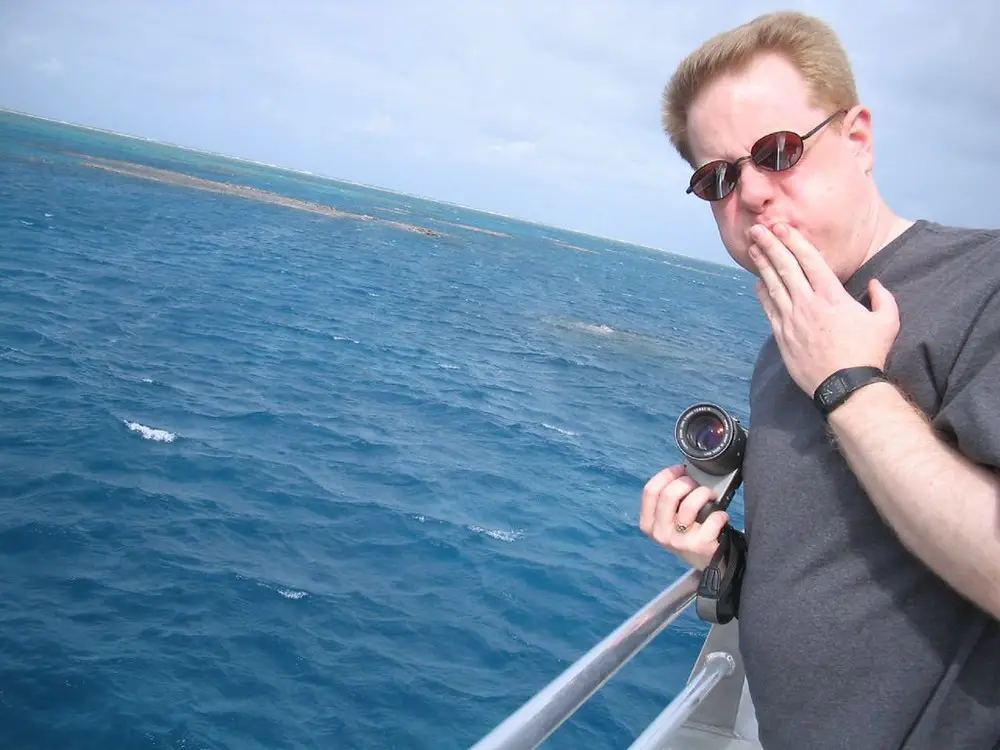
If you suffer from sea sickness, you may be asking do you get seasick on a liveaboard? There is nothing worse than sea sickness, as you can’t just get of the liveaboard dive boat and recover.
If you suffer from sea sickness it’s possible to get seasick on a liveaboard. Whether you get seasick on a liveaboard depends on how badly you suffer from sea sickness, sea conditions on your trip, size and stability of the liveaboard and if you take sea sickness medication or remedies on your trip.
Liveaboards are much bigger and more stable than most dayboats and in calm seas you won’t feel much notion. I have been on many liveaboard trips and not seen anyone get seasick. If you suffer from seasickness I recommend you choose a long liveaboard, which tend to be the most stable.
I have also included two tables of longer liveaboard dive boats which will be more stable.
The first table is of all liveaboard dive boats of 40+ metres (131+ feet), followed by a table of liveaboards of 30+ metres (98+ feet), and less than 40 metres (see below).
A longer and more stable liveaboard dive boat is less likely to give you sea sickness in the first place.
The best way to dive anywhere in the world is by a scuba diving liveaboard. You can check the latest and best deals on liveaboards using the following window:
What causes sea sickness on a liveaboard dive boat?
Seasickness is caused by a conflict between your inner ear and the motion of the liveaboard dive boat.
Your balance mechanism resides in your inner ear and is what is at the center of sea sickness. This can be set off by any form of motion, and the worse the motion, the more likely you’ll suffer from motion sickness, which on a boat is referred to as sea sickness.
But how do you prevent sea sickness on a liveaboard dive boat?
Ways to prevent sea sickness
- Medication.
- Alternative remedies like ginger and seasickness bands.
- Look out to the horizon.
- Pressure points can work.
- Stay well hydrated.
- Eating can help prevent seasickness.
- Choose a longer liveaboard dive boat.
Use medication to prevent sea sickness on a liveaboard
Stugeron medication is a sea sickness medication you can get over the counter in the UK that works well for many sea sickness sufferers. If you are in the USA sea sickness medication available in any drug store and in many supermarkets is cyclizine (Marezine) and dimenhydrinate (Dramamine).
You may find you only need to take medication if the swells are worse or only at the start of your liveaboard trip. Once your body gets used to the motion of the boat, you may find you no longer need to take your sea sickness medication.
Important note: Be aware of the side effects of taking any drug and check with your doctor before you take them or give them to your children.
When I used to suffer from sea sickness I used stugeron, and the side effect I had with stugeron was extreme tiredness.
Eat ginger to help with sea sickness on a liveaboard
Ginger can help some people prevent seasickness when eaten before boarding a boat, and possibly for the first day or so once under way, until your body adapts to the motion of the liveaboard dive boat.

Wrist bands help with sea sickness on a liveaboard dive boat
Wrist bands can help to prevent sea sickness when you’re on a liveaboard dive boat, which you can purchase online. Whether wrist bands actually work or if the affect is a placebo doesn’t matter if they prevent sea sickness.
My wife uses wrist bands, and they seem to work for her to prevent motion sickness.
Looking out to the horizon to prevent sea sickness on a liveaboard
As sea sickness is caused by a mismatch between your balance sensory readings versus your surroundings, you can avoid this by focusing on the horizon. Focusing on the horizon gives your brain a reference point for the movement of the liveaboard dive boat.
The problem with the concept of looking out to the horizon to prevent sea sickness on a liveaboard is when you go below deck, as you can no long fix your gaze on the horizon.
Needing to look at the horizon also stops you from being able to look down when setting up your scuba gear, or simply reading a book.
Pressure points can help to prevent seasickness on a liveaboard
You have a pressure point on your wrist that will stop your feelings of seasickness. But its knowing where the pressure point is, and having someone else to administer the pressure, as you can’t do it yourself.
My daughter suffers from sea sickness and when we were in a dive trip in Australia I used this technique to relieve her of her seasickness.
Staying well hydrated will help prevent sea sickness
Sipping cold water or a carbonated drink like seltzer or ginger ale can curb the nausea of sea sickness. But you should avoid caffeinated drinks like coffee and coke, which can contribute to dehydration and make nausea worse.
Eating food can help with sea sickness
It is far better to eat something than to have an empty stomach if you’re prone to sea sickness, as an empty stomach can enhance the feelings of sea sickness.
Choose a longer more stable liveaboard dive boat
You should choose a liveaboard dive boat that is as long as possible, as the longer the liveaboard, the more stable it will be on the water. A stable liveaboard will be less likely to give you sea sickness.
Longer boats are less affected by smaller waves and swells, which means in calmer seas you may not even feel any motion sickness on a larger liveaboard dive boat.
However, even on longer liveaboard dive boats if you encounter stormy seas you may still suffer from motion sickness and get seasick.
I suggest you choose a liveaboard of 40+ metres (131+ feet), but if you can’t find the right liveaboard for where you want to dive on a 40+ metre liveaboard dive boat, try finding one that is 30+ metres (98+ feet) in length in the second table below instead.
Table of 40+ metres (131+ feet) liveaboard dive boats
One of the things that may affect whether you get sea sick on a liveaboard is the length of the boat. The longer the liveaboard, the more stable the boat will be and therefore, will be better for you if you’re likely to suffer from sea sickness.
There’s no guarantee that a longer liveaboard dive boat will stop you from being sea sick, especially if there are bigger swells, but you are far better to book a liveaboard dive boat that is longer.
This list of scuba diving liveaboards is in descending length order for all liveaboard dive boats with lengths of 40+ metres (131+ feet). If you want to change the list order, use the “Sort by” dropdown below. This table of liveaboards includes customer ratings out of 10 and my Scuba Diving Earth Luxury Rating (SDE Lux Rate) – see below for more details of what this means.
| Discover Liveaboard | Country | Customer Rating | SDE Lux Rating % | Liveaboard Length (Metres) | Liveaboard Length (Feet) | Flexible Booking | |
|---|---|---|---|---|---|---|---|
 |
Review: Ortelius; Book: Ortelius | Antarctica | 6.8 | 44% | 91 | 299 | NO |
 |
Review: MV Plancius; Book: MV Plancius | Antarctica | 8.8 | 48% | 89 | 292 | NO |
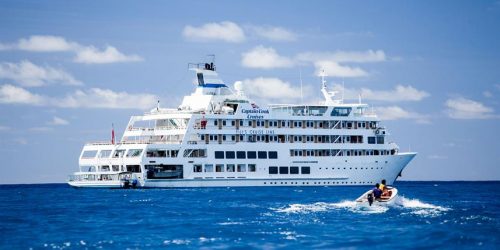 |
Review: MV Reef Endeavour; Book: MV Reef Endeavour | Fiji | 9.2 | 56% | 73 | 240 | YES |
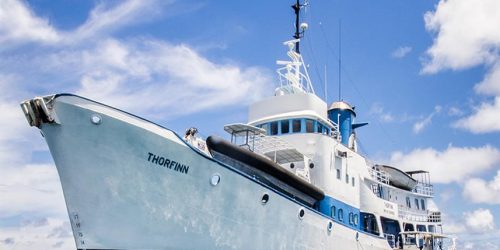 |
Review: SS Thorfinn; Book: SS Thorfinn | Micronesia | 8.8 | 88% | 58 | 190 | YES |
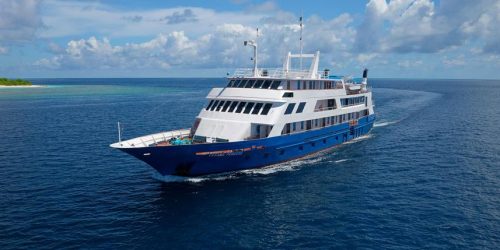 |
Review: MV Yasawa Princess; Book: MV Yasawa Princess | Maldives | 0 | 62% | 55 | 180 | YES |
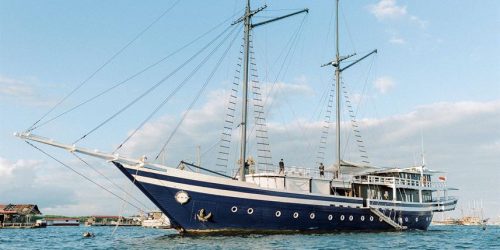 |
Review: Scubaspa Zen; Book: Scubaspa Zen | Indonesia | 10 | 88% | 53 | 174 | YES |
 |
Review: MSV Amira; Book: MSV Amira | Indonesia | 8.7 | 87% | 52 | 171 | YES |
Table of 30+ metres (98+ feet) liveaboard dive boats
This list of scuba diving liveaboards is in descending length order for all liveaboard dive boats with lengths of 30+ metres (98+ feet), but less than 40 metres.
If you want to change the list order, use the “Sort by” dropdown below. This table of liveaboards also includes customer ratings out of 10 and my Scuba Diving Earth Luxury Rating (SDE Lux Rate) – see below for more details of what this means.
| Discover Liveaboard | Country | Customer Rating | SDE Lux Rating % | Liveaboard Length (Metres) | Liveaboard Length (Feet) | Flexible Booking | |
|---|---|---|---|---|---|---|---|
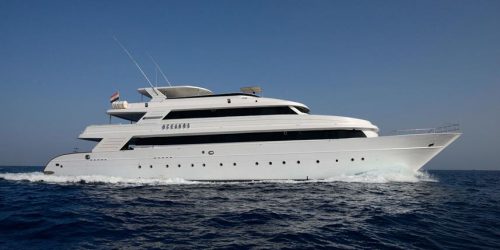 |
Review: MY Oceanos; Book: MY Oceanos | Egypt | 8.6 | 83% | 39 | 128 | NO |
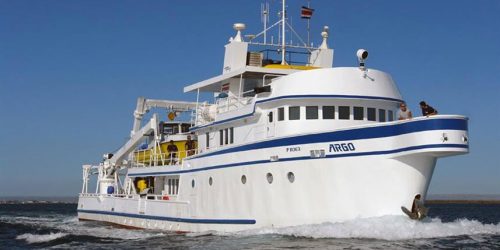 |
Review: MV Argo; Book: MV Argo | Costa Rica | 8.9 | 81% | 39 | 128 | YES |
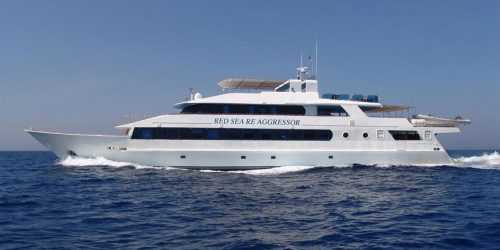 |
Review: MY Red Sea RE Aggressor; Book: MY Red Sea RE Aggressor | Egypt | 0 | 81% | 39 | 128 | NO |
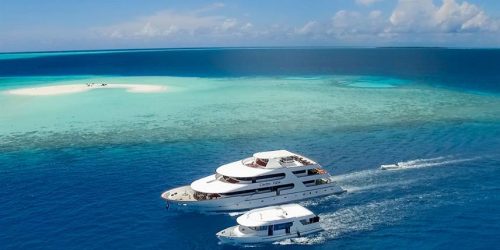 |
Review: MV Carpe Vita; Book: MV Carpe Vita | Maldives | 9.2 | 73% | 39 | 128 | YES |
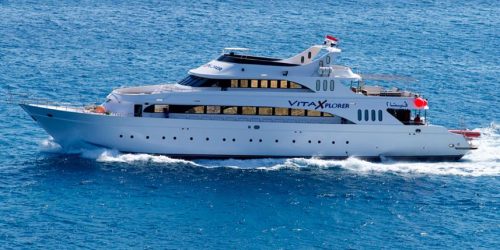 |
Review: MY Vita Xplorer; Book: MY Vita Xplorer | Egypt | 7.5 | 69% | 39 | 128 | NO |
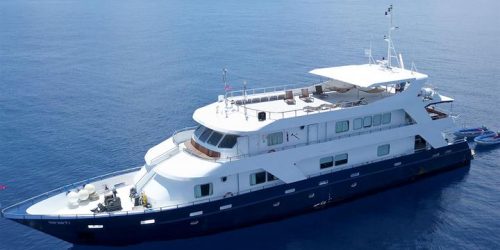 |
Review: MY Infiniti; Book: MY Infiniti | Philippines | 9.2 | 73% | 39 | 128 | YES |
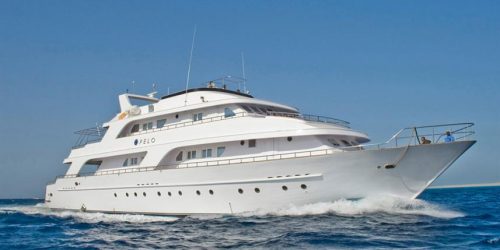 |
Review: MY Seawolf Felo; Book: MY Seawolf Felo | Egypt | 8.9 | 56% | 39 | 128 | YES |
The column headed “SDE Lux Rating %” is my own Liveaboard Luxury Rating which I’ve assigned to all liveaboards. To discover how the rating is calculated for your chosen liveaboard dive boat, click the liveaboard name link in the “Discover Liveaboard” column above (also this is explained in more detail below).
To help you to choose the right diving liveaboard for you, the “Scuba Diving Earth Liveaboard Luxury Rating” (SDE Lux Rating) means you can compare each liveaboard with other liveaboards on a like-for-like basis. This makes choosing the right liveaboard much easier.
The maximum rating for any liveaboard is 100%, and this rating is split between the 6 features listed below:
- Diver benefits: A higher ‘diver benefits‘ score means there are more features specifically for scuba divers. These include onboard nitrox, dive courses, gear rental etc.
- Liveaboard design features: The higher the ‘liveaboard design features‘ score, the more the dive boat has been designed with scuba divers in mind. This includes whether the dive boat was custom built for divers, if it has charging stations, outside showers etc.
- Cabin luxury: A high score in ‘cabin luxury‘ means the cabins on the liveaboard offer better features. These might include ensuite cabins, air-conditioning, daily housekeeping, seaviews, TVs etc.
- Onboard comfort: A high score in ‘onboard comfort‘ means there are more onboard features to make your dive trip feel more luxurious. These include what towels are provided on the liveaboard (always important for travelling light), complimentary toiletries, crew ratios etc.
- Food luxury: If you are a foodie then ‘food luxury‘ will be important to you, as a high score on this rating will mean there’s more on offer. These might include the type of food served onboard, the dietary requirements catered for, vegan food, vegetarian food, buffet style, fine dining etc.
- Drink luxury: If you like a drink in the evenings you may look for a higher score in ‘drink luxury‘ score, but this score also includes drinking water and soft drinks too.
The “SDE Luxury Rating Total” is calculated by adding the totals from each of the above features and benefits. The higher the SDE Luxury Rating, the more features and benefits the liveaboard has, which leads on nicely to how to use the SDE Luxury Rating.
How to use the SDE Luxury Rating score
When choosing the liveaboard dive boat for you, your decision is helped by customer scores, which is how the liveaboards in the above table are sorted in descending order.
If you are stuck choosing between two or three of these liveaboards, where each one has a high customer score out of 10 and that have itineraries you like, use the SDE Luxury Rating score to help narrow down your choice.
Think about it like using Booking.com when searching for the best hotel to stay at. Booking.com also use a customer score where each customer rates hotels out of 10. This is similar to the liveaboard customer rating, which is also rated out of 10.
But let’s say you only like to stay in hotels rated 9 and above on Booking.com, but you also want the hotel to have WIFI or parking, or to have a swimming pool etc. The features each hotel has is secondary to the score out of 10.
In the case of liveaboards, the SDE Lux Rating system can also be used as a secondary tool in the same way to help you determine which liveaboard offers the best features to suit you.
Each of the liveaboards linked-to from the above table will be individually scored. Which means that if cabin luxury is important to you, focus on this score to help you choose your liveaboard. But if diver benefits are your top priority, use this score first, and so on.
Final thoughts about do you get seasick on a liveaboard
I used to get seasick when I went on any boat, but the more time I spent on boats the less I was seasick. I would get my sea legs are a while and seasickness was no longer a problem. I have never been physically sick, but just felt nauseous.
But I no longer suffer from seasickness (I must have sea legs now), which means that you may also get over your sea sickness problem by diving from more liveaboards.
But if this is your first time on a liveaboard, make sure you take some medication after speaking with your doctor first.
Is a liveaboard a bad idea if you’re prone to seasickness?
If you are prone to seasickness this should not put you off from booking a liveaboard trip. On a positive note, once you are underwater on a dive, any seasickness feeling will disappear, plus you can take seasickness tablets or use a patch if you feel really bad. You could book a short liveaboard trip and see how you get on, and then book a longer liveaboard trip after that.
If you are prone to seasickness, I have pulled out too tables of liveaboards with short itineraries of 2 days/1 night and 3 days/2 nights to help you discover if you are okay on a liveaboard, but on a shorter trip itinerary. This table also includes the liveaboard length too, so you may better to choose a longer liveaboard if you can.
The following list of scuba diving liveaboards includes all liveaboards around the world that have 2 days/1 night itineraries, which are in descending customer rating order, followed by Scuba Diving Luxury Rating (SDE Lux Rating, see above). If you want to change the list order, use the “Sort by” dropdown below.
| Discover Liveaboard | Country | Customer Rating | SDE Lux Rating % | Itineraries | Length | Flexible Booking | |
|---|---|---|---|---|---|---|---|
 |
Review: KLM Sea Safari VII; Book: KLM Sea Safari VII | Indonesia | 9.6 | 62% | 2 Days/1 Night, 3 Days/2 Nights, 4 Days/3 Nights, 6 Days/5 Nights, 9 Days/8 Nights | 38m/125f | YES |
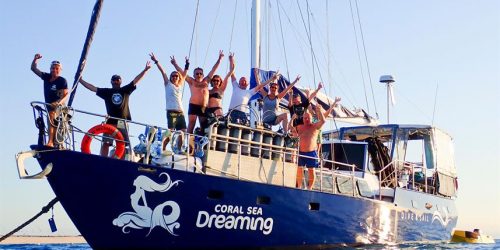 |
Review: Coral Sea Dreaming; Book: Coral Sea Dreaming | Australia | 9.2 | 62% | 2 Days/1 Night | 18m/59f | YES |
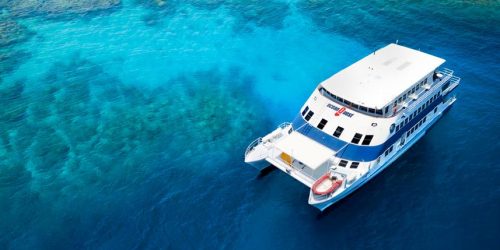 |
Review: MY Ocean Quest; Book: MY Ocean Quest | Australia | 9 | 40% | 2 Days/1 Night, 3 Days/2 Nights, 4 Days/3 Nights, 5 Days/4 Nights | 36m/118f | YES |
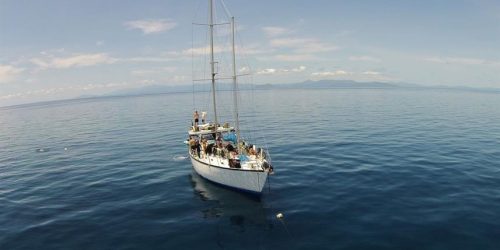 |
Review: Rum Runner; Book: Rum Runner | Australia | 9 | 44% | 2 Days/1 Night | 20m/66f | YES |
 |
Review: Cheng Ho; Book: Cheng Ho | Indonesia | 8.7 | 65% | 2 Days/1 Night, 3 Days/2 Nights, 4 Days/3 Nights, 5 Days/4 Nights, 6 Days/5 Nights, 7 Days/6 Nights, 10 Days/9 Nights | 33m/108f | YES |
The following list of scuba diving liveaboards includes all liveaboards around the world that have 3 days/2 night itineraries:
| Discover Liveaboard | Country | Customer Rating | SDE Lux Rating % | Itineraries | Length | Flexible Booking | |
|---|---|---|---|---|---|---|---|
 |
Review: KLM Sea Safari VII; Book: KLM Sea Safari VII | Indonesia | 9.6 | 62% | 2 Days/1 Night, 3 Days/2 Nights, 4 Days/3 Nights, 6 Days/5 Nights, 9 Days/8 Nights | 38m/125f | YES |
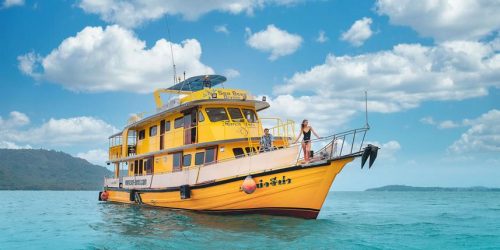 |
Review: MY Marco Polo; Book: MY Marco Polo | Thailand | 9.3 | 67% | 3 Days/2 Nights, 5 Days/4 Nights, 7 Days/6 Nights | 23m/75f | YES |
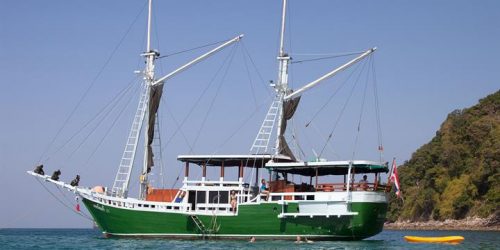 |
Review: Merdeka 1; Book: Merdeka 1 | Thailand | 9.3 | 77% | 3 Days/2 Nights | 25m/82f | YES |
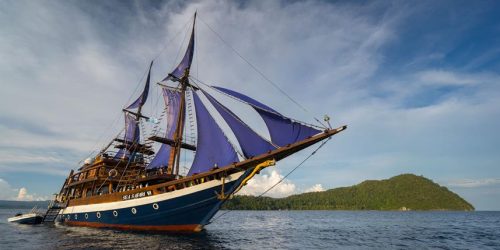 |
Review: KLM Sea Safari VI; Book: KLM Sea Safari VI | Indonesia | 9.3 | 69% | 3 Days/2 Nights, 6 Days/5 Nights, 7 Days/6 Nights, 8 Days/7 Nights, 9 Days/8 Nights, 10 Days/9 Nights | 35m/115f | YES |
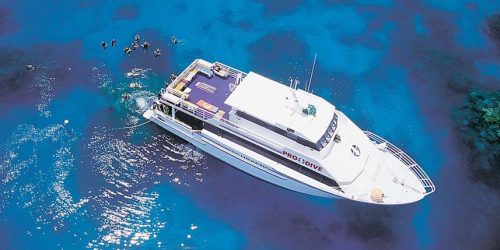 |
Review: MY Pro Dive Cairns; Book: MY Pro Dive Cairns | Australia | 9.2 | 52% | 3 Days/2 Nights | 24m/79f | YES |
 |
Review: The Junk; Book: The Junk | Thailand | 9.1 | 63% | 3 Days/2 Nights, 5 Days/4 Nights, 7 Days/6 Nights, 11 Days/10 Nights | 33m/108f | YES |
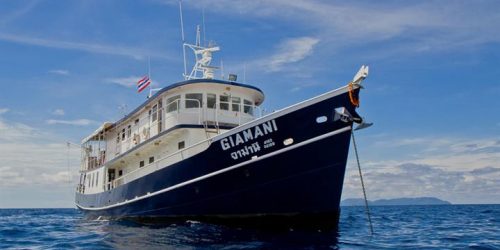 |
Review: MY Giamani; Book: MY Giamani | Thailand | 9.1 | 65% | 3 Days/2 Nights, 5 Days/4 Nights | 24m/79f | YES |
Other tips to avoid seasickness on a liveaboard
- Book a cabin in the centre of the liveaboard, which will reduce motion. Cabins towards the bow or stern will be subject to more movement.
- Avoid breathing in fumes from the exhaust of the boat. This is less likely on a liveaboard vs a day boat.
- Avoid looking down too much.
- Ask for help setting up your scuba gear to avoid having to look down.
- Wait to set up your scuba gear until a time when the boat is in a calmer location.
- Look up to the horizon regularly when setting up your scuba gear.
- Get plenty of fresh air and wind in your face, as this will help.
- Book a liveaboard where the seas are more likely to be calm, and therefore resulting in less motion.
I hope you enjoyed this article about do you get seasick on a liveaboard
If this article hasn’t answered all of your questions. If you have more questions either about snorkelling or scuba diving (or specifically about do you get seasick on a liveaboard), please comment below with your questions.
There will also be many more articles about scuba and scuba diving safety tips (and on snorkelling too) for you to read and learn about this fabulous sport.


